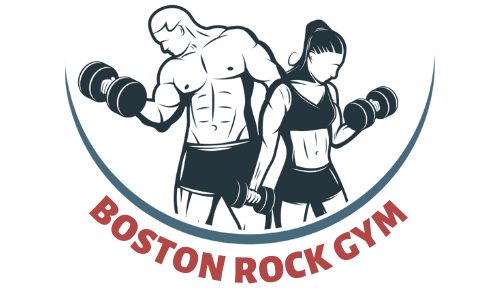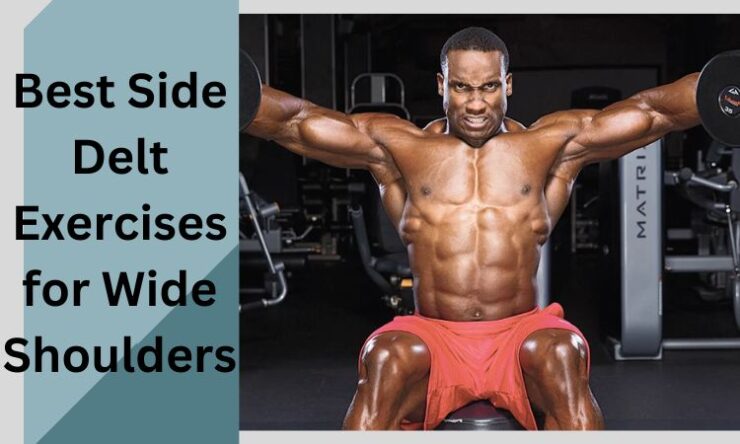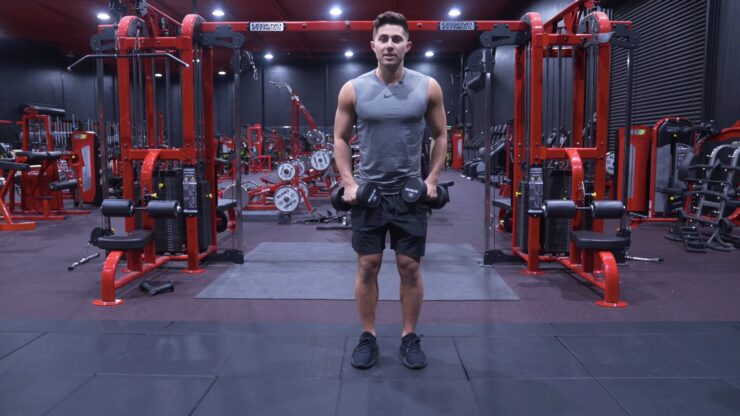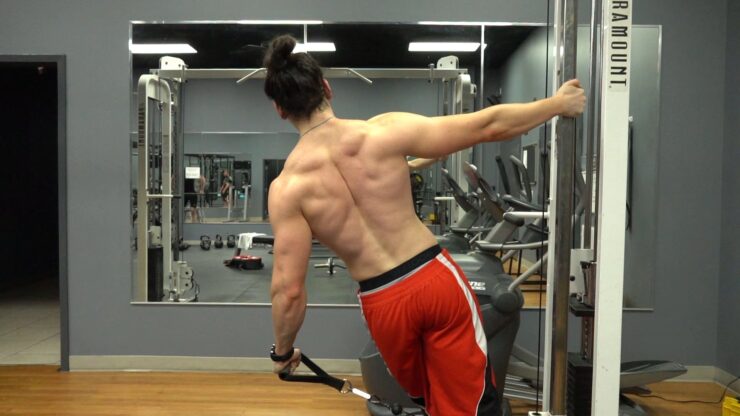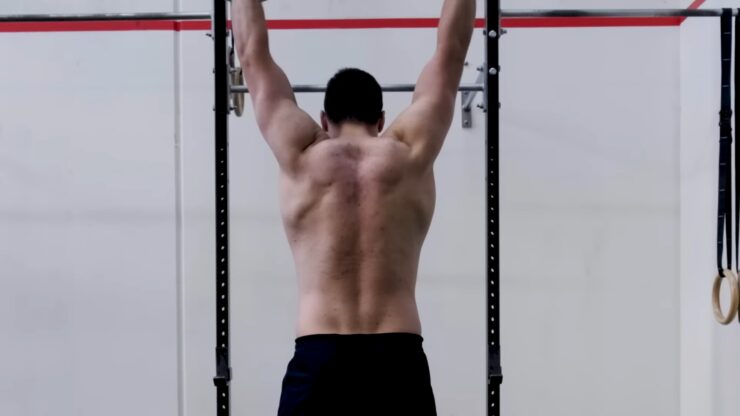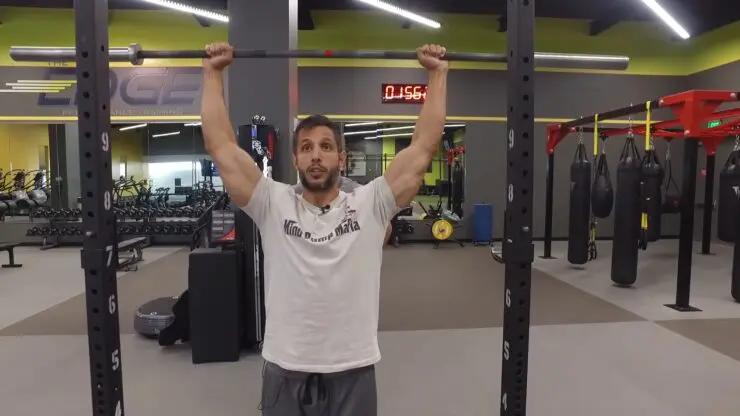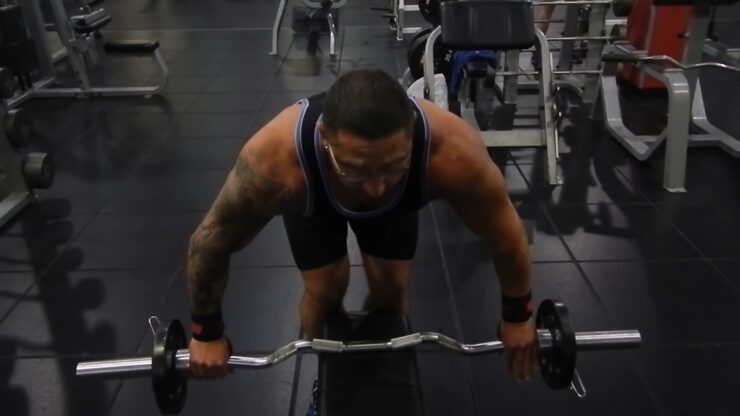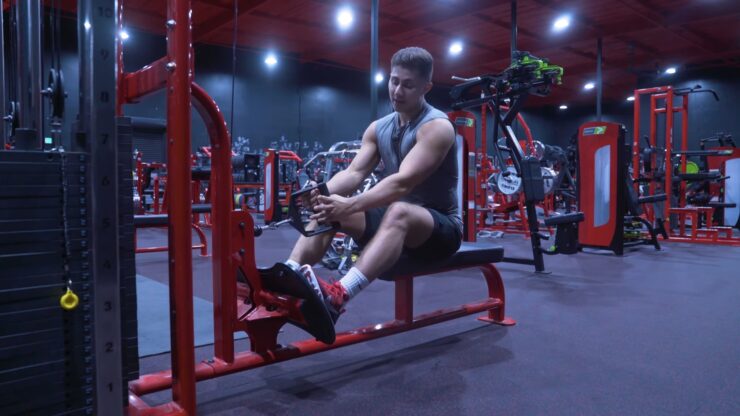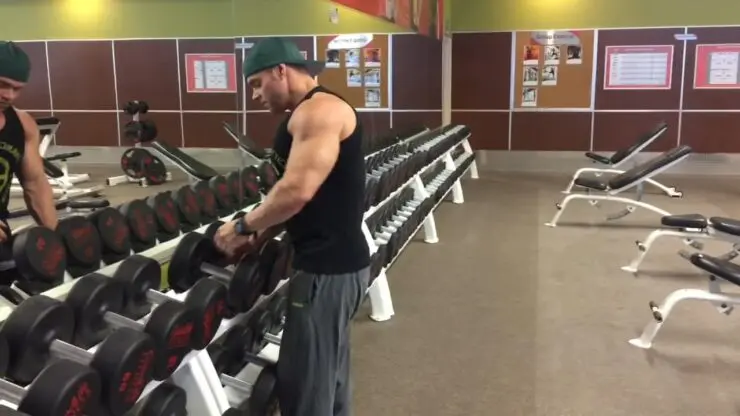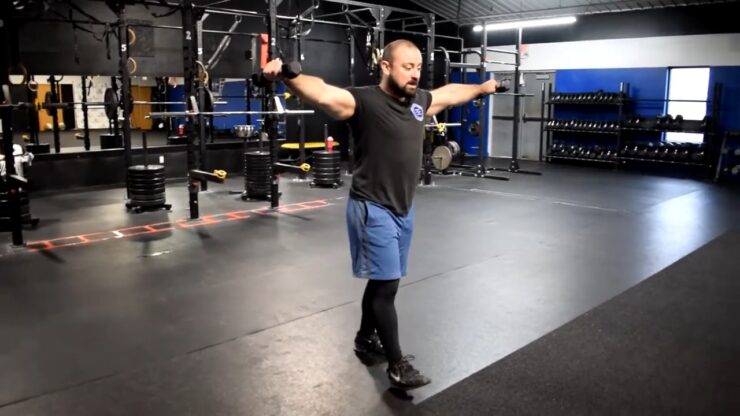Forget about wasting an eternity trying to find the appropriate exercises for wide shoulders on your own and use our guide instead!
We provide you with the top 10 best side delt exercises for wide shoulders that you can start doing instantly.
Take a look below for all the details.
Contents
Top 10 Best Side Delt Exercises for Wide Shoulders
1. Dumbbell Lateral Raise
The medial deltoids may be effectively targeted with dumbbell side lateral raises, which are a simple workout. The three deltoid heads grow in size and strength as a result of lateral rises, which focus solely on the shoulders.
The lateral raise is a terrific exercise for developing side delts since it primarily works the shoulder abduction. Here is how to perform it:
- Hold a dumbbell in each hand and take a tall stance with your feet hip-width apart
- To tilt your body forward, keep your shoulders slightly externally rotated and bend forward at the waist
- Breathe in to tighten your abdominal muscles, and maintain your elbows slightly bent.
- When the dumbbells are nearly in line with your shoulders, exhale as you raise them out to your sides
- As you gradually bring the dumbbells back to your sides, take a deep breath
- Repeat as many times as needed
2. Cable Lateral Raise
As long as we’re talking about lateral raises, dumbbells are not your only option. The benefits of cable lateral lifts are equivalent.
Activation of the side delts is comparable to that of the dumbbell lateral raise. The strength curve is altered when the cable is used.
This is the most difficult element of the exercise after your arm is 90° away from the cable and perpendicular to it.
This indicates that it is most challenging to stress the side delts from various angles around halfway up the lateral rise. This is how you do it:
- Position yourself so the cable stack is to your left. With your right hand, take the handle and place the cable attachment at the bottom
- The cable can be placed either in front of or behind your body. Both are acceptable choices. Some individuals prefer to spread their legs apart and let the cable pass between them. The decision is yours
- When your arm is parallel to the floor, raise it to the side with a soft elbow
3. Lu Raise
Lu Xiaojun, one of the most well-known Olympic weightlifters from China, made this popular a few years ago.
His broad shoulders make it obvious why. These full-range lateral lifts finish with the dumbbells or plates above.
Here’s how to perform the Lu raise as it differs significantly from the conventional lateral raise in execution:
- Place some dumbbells or plates at your side and begin
- With your arms straight, start the lateral lift. Slowly turn your hands upward as you lift your arms so that they are horizontal and your palms are facing forward
- Keep going until your arms are raised overhead
4. Seated Barbell Shoulder Press
This one should be done with the elbows flexed to the side as you are targeting the side delts. Dumbbells will make the workout more challenging because you’ll need to handle each one separately, increasing its stability need. This is how you do it:
- With your palms facing front, your upper arms parallel to the floor, as well as your elbows at 90 degrees, hold the dumbbells in place by your shoulders
- Lift the dumbbells straight up in the air
- Repeat
5. Behind The Neck Press
The behind-the-neck press has a bad rep for damaging shoulders. However, this is untrue. The gradual transition to long office hours is the key factor behind its decline in popularity.
You’re fine to go if you can comfortably press a barbell from your traps! Here’s how to correctly do the behind-the-neck press:
On your traps, unrack the barbell as if you were back squatting. In terms of grip breadth, I discover that my strongest grip is somewhere in the middle between a snatch and a clean grip
As you press up, drive your elbows beneath the barbell. To achieve this, you need to keep a large chest
6. Wide Grip Upright Row
With a thin grip, upright rows are frequently performed, emphasizing the front delts more. When doing upright rows with a broader grip, the elbows extend straight out to the sides, increasing shoulder abduction and better activating the side delts.
The posterior muscles in your back are also strengthened with upright rows, which concentrate on the shoulders and biceps.
Performing this pulling exercise wrong may result in shoulder pain. A tendon in the shoulder can be pinched if the shoulders are allowed to rotate internally.
Before doing this exercise, be sure you are using the right technique. Here’s what to do:
- Put your feet hip-width apart and stand tall
- Hold the barbell with your hands slightly wider than shoulder distance apart and in an overhand grip
- Grasp the ground with your feet to maintain stability
- Pull your ribs in to activate your core, and then tighten your arms to remove any slack from the barbell
- Pull the barbell gradually up and toward your chest
- When the barbell is nearly parallel to your pecs, pause. How high you can raise the barbell may depend on how easily your shoulders move
- Before beginning your next repetition, slowly drop the barbell back to its starting position while maintaining tension in the arms
- Repeat as many times as necessary
7. Reverse Pec Deck
The reverse pec deck offers a wide variety of hand postures. The most typical position is to target the back delts with hands down.
But since you desire side delt movement, the grip you should use is grasping the handles with the palms facing in.
The reverse pec deck may be used to build side delts in the following ways:
- When gripping the handles, adjust the seat so that your arms are parallel to the ground
- Once your arms are square to your side, make a reverse fly motion with them
8. Seated Row
The seated row is a powerful back muscle builder. It does, however, activate the side delts’ muscles a tiny bit less than the lateral raise does.
Therefore, if you’re working on increasing the volume of your side delts, it’s definitely worth incorporating the sitting row. To focus on the side delts, you must slightly alter the cable row. This is how:
- For this, you may either utilize a machine row or a cable row. You’re okay as long as you can change the height at which you’re pulling
- When you row, adjust the handles to get a high row. Your arms should be parallel to the ground with your palms facing down and your elbows abducted (away from your sides).
- Raise your elbows as you row
9. Dumbbell Armpit Rows
Another exercise that resembles the upright row is the dumbbell armpit row, which is a version of the dumbbell lateral side raise.
Given that dumbbells are less likely to produce excessive internal shoulder rotation than the standard barbell upright row, it may be more pleasant for some lifters. Dumbbell armpit rows are a good side delt workout since they include shoulder abduction.
- Put your feet hip-width apart and stand tall
- Use a neutral grip while holding a dumbbell in either hand
- In order to keep the dumbbells close to your body, exhale and raise your arms out to the sides while maintaining a bent elbow position
- When your upper arms are roughly parallel to the floor and in line with your shoulders, lift the dumbbells up towards your armpits
- Hold the peak of the exercise for 1-2 seconds while contracting your shoulders
- Pull the dumbbells back to your sides while taking a deep breath
- As you continue for the required number of sets and reps, keep the arms tight
10. Iron Cross Dumbbell Walks
This exercise will help you target your medial deltoids in a number of ways. In this workout, you walk as far as you can while maintaining control of the weight and holding dumbbells out to your sides.
This form of exercise strengthens your core, increases muscular endurance, burns fat, and exhausts your deltoids while also putting your mental fortitude to the test.
In the gym, look for a free area where you may move about without disturbing others, then follow these steps:
- Hold a dumbbell in each hand while standing tall and engaging your core
- Lift your arms up so they are parallel to your shoulders and at your sides
- Turn your wrists so that your pinkies are facing down and your thumbs are pointing up
- Brace your abs while bringing your shoulders down and back
- You can stop holding the dumbbells out to your sides with perfect form when you have walked around your training area multiple times
- With control, lower the dumbbells to the ground
- After the required amount of walks, take a break and repeat
Conclusion
Remember that hard work will always pay off, so stay consistent, and don’t skip your workouts if you want to see the desired results as soon as possible!
You can also mix the exercises we provided so that you don’t get bored and you can target all the areas you want to.
